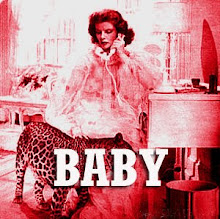
Mouth Music
Guest Article by Jackie Chappell
Isn’t That Just Singing?
Surely music “played on the mouth” is just what most people refer to as singing? Well, yes and no. Genuine puirt-a-beul (pronounced porsht-ah-buhl) has a number of distinctive features which mark it out from standard singing. Mouth music is a primarily rhythmic form of song, where the words are chosen for their rhythmic qualities and the patterns of sound they make. Consequently most of the lyrics are more or less nonsense, but sometimes they take the form of puns or tongue twisters. Some songs contain syllables called “vocables,” which are chosen to sound like a particular instrument, or as a kind of sound effect to fit in with the meaning of the song. One of the reasons that I love mouth music is that it is a truly representative form of folk song; even the poorest of people can afford to use their own voices, so the songs record the everyday lives of ordinary people. The music itself is really striking to listen to, with a driving, toe-tapping rhythm. Expert mouth music singers will tell you that the hardest thing to learn is when to breathe, because the rhythm can’t be broken. Listening to Talitha MacKenzie singing “Sheatadh Cailleach” on the album “Sòlas,” and reading along with the Gaelic lyrics, I always marvel at how she can possibly fit all of the words in, such is the speed and complexity of the song.
Dances Without Instruments
Mouth music served three distinct functions, the first of which was to provide music for dancing. The majority of people would have been unable to afford musical instruments, but there was also a ban on the pipes after the 1745 Jacobite uprising, which ended in the notoriously bloody battle at Culloden, and victory for the English king, George II. Anything associated with the
Singing While You Work
The second function of mouth music was to alleviate the tedium of manual work. These songs—known as “waulking songs” or orain luaidh—were sung as tweed cloth was “fulled” or “waulked.” When tweed is newly woven, it is rather loose and not at all wind-proof. Since Harris tweed is supposed to be able to stop a
Remembering Tunes
Finally, mouth music was used to help musicians to remember and pass on traditional tunes, or to practice the music when they did not have an instrument available. Most traditional musicians would not have read music, so they would learn songs by playing with others, and by singing the tunes. A further style of mouth music (more often employed in
Take Your Music with You
One of the most striking things about mouth music, when you come to look into it in detail, is the way that it reveals the migration, inter-mingling, and social history of people over time. Many people of Celtic origin in
So, no—it isn’t just singing. —Jackie Chappell
image by me













No comments:
Post a Comment